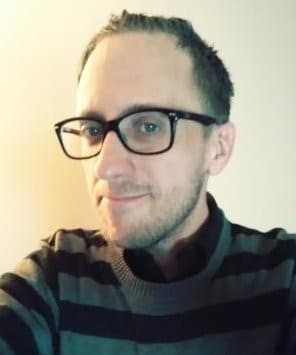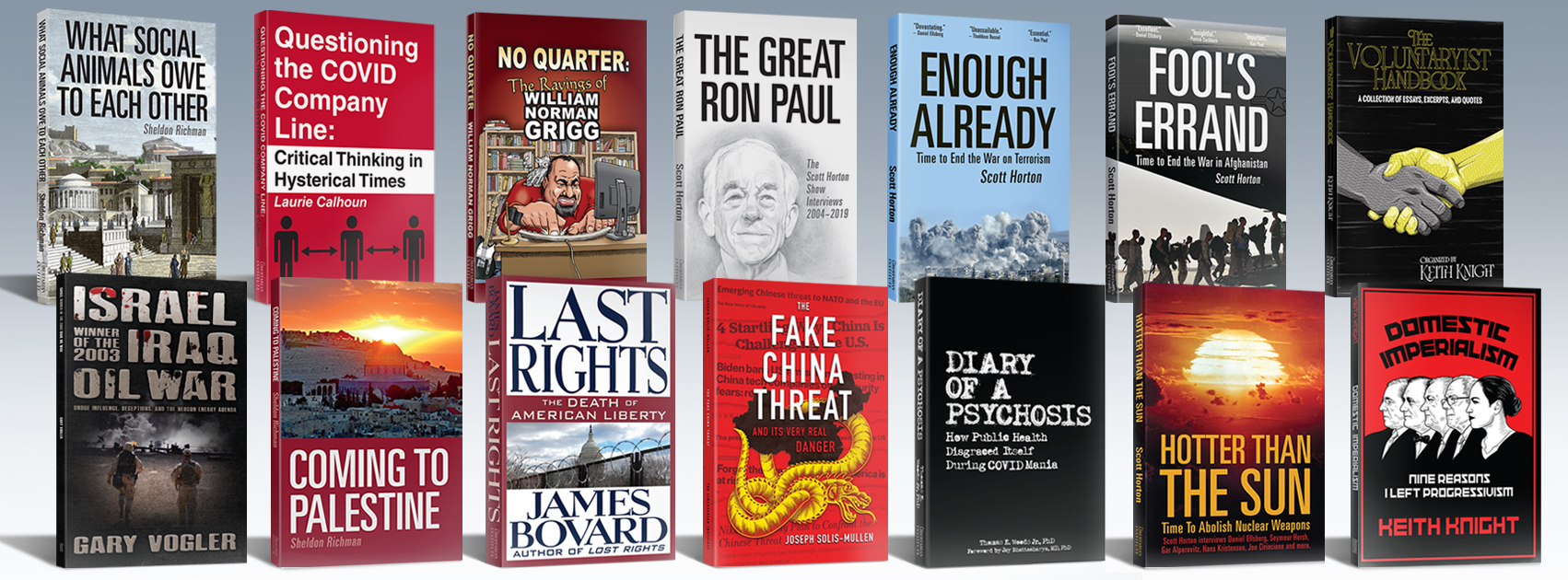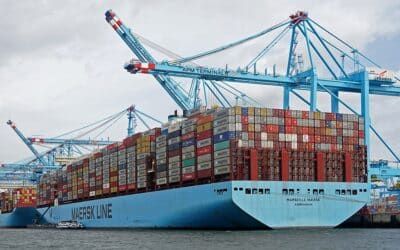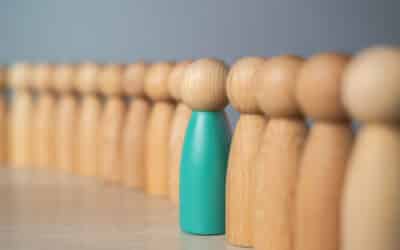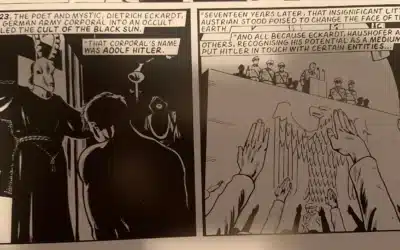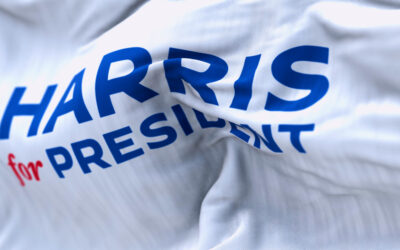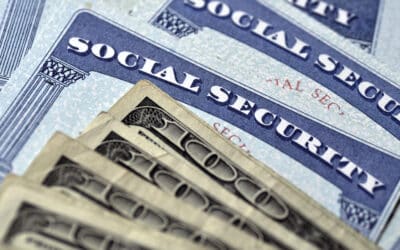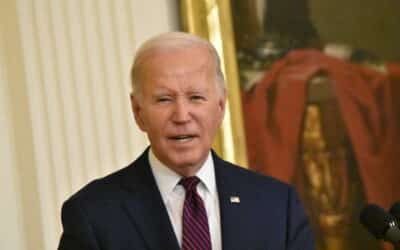Cassville is located in the extreme southwest of Missouri, sitting adjacent to the northeastern Oklahoma and southeastern Kansas state borders. It’s about an hour away from the nearby cities of Joplin and Carthage and about two and a half hours, 130 miles, from Elohim City, Oklahoma.
It was in Cassville that William Maloney operated a real estate brokerage office. In the fall of 1994, Maloney had advertised for sale forty acres of property in the Ozark Mountains. Sometime from October 25th to 27th, 1994, Maloney’s office received a phone call inquiring about that property.
The caller expressed an interest in purchasing the property and Maloney wrote down the caller’s name. Maloney recalled that he asked the caller to repeat his last name, and that the caller told him “McVeigh.” Maloney spelled the name back to the caller, saying “M-C-V-E-Y.” According to Maloney, the caller responded “That’s close enough.”
Thus begins William Maloney’s fateful encounter with Oklahoma City bomber Timothy McVeigh. The phone call wouldn’t be the last time that Maloney heard from McVeigh. In fact, he would come face to face with the bomber and co-conspirator Terry Nichols, with a third accomplice, in the first week of November.
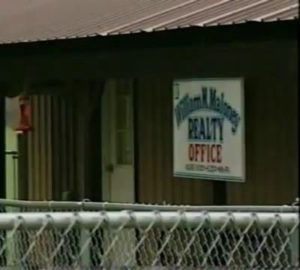
The two men who went inside the office introduced themselves to Bill Maloney as Bob Jacquez and Terry Nichols. Maloney related that “they was just nice and calm,” just a couple of potential buyers as far as Maloney was concerned. After a few minutes of discussion the third man who had stayed in the car at first finally came into the office and introduced himself as Tim. The group was there, they told Maloney, to discuss their mutual interest in the forty acre parcel in the Ozarks that McVeigh had called about two weeks prior.
During the conversation, Maloney observed that it appeared Jacquez was the leader of group, saying “Jacquez was very articulate; he was smart. He did about all the talking, and during that period of time, he was in charge. He was the boss man.” Maloney’s business partner, Joe Davidson, was equally observant of the scene, saying “He [Jacquez] seemed to be the one that was in control and in charge of what was going on.” The unusual trio of supposed buyers did not tell Bill Maloney why they were interested in buying land that had been advertised as “in the middle of nowhere, at the end of a rough road, at the bottom of a hollow” with the addendum that “there may be a cave.”
Maloney said that at the time he was curious what the men were interested in, asking the question “Were they looking for a place to hide?” Joe Davidson noted that the men chuckled at the question but provided no verbal response. Later, Oklahoma FBI agent Bob Ricks would express a similar sentiment to a documentary film crew:
“The theory there was that Timothy McVeigh was searching for a place to perhaps have a hide-out and Robert Jacquez was utilized to perhaps obtain property in Missouri. It’s very remote terrain, it’s terrain familiar — there are a lot of right wing groups around there, from Elohim City Oklahoma to other groups in Arkansas to the Ozarks in Missouri which would be the perfect type spot.”
In discussing the geography surrounding the for-sale property, Maloney had Jacquez handle a new laminated topographical map of the area and afterwards he put the map in his safe. Maloney provided the map to the FBI during his first interview, hoping it may turn up fingerprints that could identify the man he saw as being in charge that day. It is unknown what became of this map: once it was in the FBI’s hands, it disappeared. As with the Murrah building surveillance tape videos, Maloney’s map with its possible fingerprint evidence has disappeared from the investigatory record, never to appear at trial.
Maloney told FBI Special Agent Bill Teater that Robert Jacquez was a muscular man with large biceps and a bulging neck, standing about 5’11 and said that “he looked like a military guy. I spent a long time in the service and I can pretty well spot ’em. He was real muscular; he looked maybe like a weightlifter.” Maloney’s description, given during his witness interview, was documented by the FBI in what is called a 302 report. In general, an FBI 302 report contains information about what a witness said to the interviewing Special Agent and includes whatever details the interviewing agent deems relevant to an investigation. Maloney’s 302 report details that Jacquez was wearing black pants, a black t-shirt, and olive colored hiking boots with small “suction cups” on the soles. He had a tattoo visible on his left forearm that had wings or some sort of insignia, possibly military. Jacquez had a short “flat-top” type haircut and a dark tanned complexion, described as “possibly American Indian.” This detail is notable — McVeigh was, by all accounts, a white-supremacist as were the vast majority of other potential suspects suggested as possible co-conspirators within alternative accounts of the bombing. Who was this dark skinned man, described as the evident “boss” of McVeigh?
The FBI considered Maloney and Davidson’s account significant enough to submit Maloney to a polygraph test, which he passed. The FBI also took the unusual step of placing Maloney’s secretary, Nora Young, under hypnosis in an effort to recall potentially more details about the encounter. They commissioned the “OKBOMB” task force’s sketch artist, Jean Boylan, to produce a sketch based on Maloney’s description. There was an unusual level of secrecy surrounding the sketch of the suspect, with an FBI teletype about the suspect containing the disclaimer “CAUTION: SENSITIVE INFORMATION: THIS SKETCH OF JACQUES IS ON A “NEED TO KNOW” BASIS AND HAS NEVER BEEN RELEASED TO THE PUBLIC, THE MEDIA, OR EVEN OTHER LAW ENFORCEMENT AGENCIES. PROTECT.”

 The Manhunt for “John Doe #3”
The Manhunt for “John Doe #3”
The timing of the Jacquez visit to Cassville was reason enough for FBI investigators to suspect the man was a key conspirator in the bombing plot: just three days after the visit to Cassville, McVeigh was checked into a hotel in Kent, Ohio attending the Niles Gun Show while accomplices were busy carrying out the robbery of gun dealer Roger Moore in Royal, Arkansas.
Just five days after the Cassville visit, Terry Nichols rented a storage locker in Council Grove, Kansas where many of Roger Moore’s stolen firearms were kept. The Moore robbery was directly linked to funding the Oklahoma City bombing, with $60,000 worth of guns and precious metals stolen to raise funds for the bombing.
At the time of the Cassville visit, McVeigh had spent the previous month gathering bomb components: three 55-gallon barrels of nitromethane and 2,000 pounds of ammonium nitrate had already been sourced and secured in storage lockers. So, too, had McVeigh and Nichols burglarized a quarry for over 350 pounds of Tovex high explosive and blasting caps. Clearly, whoever this Jacquez figure was, he was with McVeigh and Nichols in the middle of the bombing operation when central actions were being carried out in furtherance of the bombing conspiracy.
FBI lead investigator Danny Defenbaugh would continue the Robert Jacquez investigation for five years, much longer than the FBI’s prematurely aborted manhunt for John Doe #2. This indicates that the FBI believed that John Doe #2—a man seen at Elliott’s Body Shop with someone witnesses identified as Timothy McVeigh—was a separate and different person than the man witnesses described as Robert Jacquez and it also indicates that the FBI considered Jacquez to be of great importance given the length of time and man hours invested in investigating him.
The results of a Rocky Mountain News investigation into the Jacquez manhunt was published in the fall of 1998 and revealed that in the three years since the bombing, the FBI had been relentlessly looking for the suspect. Investigative journalist Kevin Flynn wrote that “No other name investigated in the bombing consumed nearly the time and effort the FBI spent turning the nation upside down to find him” and Flynn provided many examples, some recounted here:
- Over a three year period, the FBI performed hundreds of background checks on people whose last names are Jacks, Jacques, Jacquez or Jocques.
- FBI agents fanned out through 39 states, interviewing people and performing records searches related to any people whose names were variations on the name “Jacquez”
- The lengths to which the FBI went when investigating Jacquez are exemplified by the investigation of a woman named Linda Jacquez from Percy, Illinois. The FBI examined records of over 1,000 personal calls made from her home in 1994. Similar records analysis was likely performed on the other hundreds of subjects whose names were Jacquez or variations thereof.
- A man named Jacquez who lived in Colorado Springs was interviewed by the FBI in August 1995 because agents had found his name on a motel registration card at a Days Inn in Rogers, Arkansas dated September 5th, 1994. While the man was found to have had no connection to the bombing, some clues regarding the FBI’s interest emerge from the details: Rogers, Arkansas is located just 35 miles from Cassville, Missouri. Additionally, and perhaps significantly, a group of bank robbers that FBI investigators at one time linked to the bombing had been through Rogers, Arkansas casing armored car routes.
- The FBI subpoenaed Newsweek for its subscription records on anyone named Robert Jacks, Jacques or Jocques. Other contemporary news magazines were probably similarly the recipients of targeted subpoenas.
- It appears that the FBI’s all-encompassing investigation was in some respects superficial: the FBI investigated every person and conceivable record that might feature the name “Jacquez” (and variations thereof) even though “Jacquez” was probably a fake name that the man had used. Surely FBI investigators would have realized this, but nevertheless continued to track down any and all details they could related to the phony name.
Unresolved Leads and Dead Ends
Among the details uncovered when investigating Jacquez was that McVeigh buddy Michael Fortier’s former neighbor and associate Jim Rosencrans once shared a post office box with a “Robert Jacquez” in Odessa, Texas. This fact did little to contribute to understanding the man’s true identity—only denials were offered from Rosencrans with him saying that he had never heard of anyone using the name Jacquez in spite of evidently having shared a mail box with the man. Thus, this possible lead remains unresolved to the satisfaction of anyone curious enough to consider the lead possibly relevant. Who was it, and why wasn’t Rosencrans more thoroughly “motivated” to provide answers? Was the mailbox detail a red herring?
Yet another bizarre fact emerged concerning Jacquez as it relates to suspects in the investigation: the FBI discovered an address book in Terry Nichols’ home which featured the name “Jacquez” written out multiple times with variations on the spelling: Jacques, Jacquez, Jacks. The handwriting on the paper was thought to belong to Marife Nichols, Terry Nichols’ mail order bride from the Philippines, because the address book belonged to her. However, what exactly Marife (or someone else) was doing writing this name down on an otherwise blank page in her address book remains unknown and incredibly suspect. When interviewed about this unusual detail by Kevin Flynn of the Rocky Mountain News, former FBI lead investigator in the bombing case, Weldon Kennedy, claims he wasn’t even aware of the notebook or the writing found within it. This fact either shows a stunning level of ignorance and possible incompetence by the OKBOMB task force’s supposed leader, or, dishonesty. Kennedy would add “For the life of us, we were never able to pin (the Jacquez sighting) down.” Consider the fact that Weldon Kennedy lied about a significant detail of the investigation in his book, On Scene Commander, where Kennedy wrote that “the case would primarily be based on forensic evidence because there were no eyewitnesses.” Contrast that with the established fact that there were over 24 eyewitnesses in downtown Oklahoma City who saw Timothy McVeigh and a judgment about Weldon Kennedy’s honesty can be rendered.
Ultimately the Jacquez leads were followed up on exhaustively over at least five years with no identification of the suspect being made. One of the obvious problems with the FBI’s seemingly exhaustive investigation was that the focus appeared to be on potential suspects whose actual real names were “Robert Jacquez” or variations thereof when it’s highly probable that the name was just an alias that the mystery man had used. This fact would prove to be the likely reason FBI investigators were stymied when trying to identify the man. Contributing to this failure is the fact that certain leads appear to not have been examined more aggressively: the Rosencrans lead, the notebook found in Nichols’ home, and finally, the fingerprint evidence.
Though Maloney turned over a laminated map with the “Jacquez” fingerprints on it, the FBI doesn’t appear to have compared those fingerprints to the 1,035 fingerprints collected in the case from key locations such as motel rooms. This is known due to the testimony of FBI fingerprint expert Louis Hupp who testified at the Nichols trial. Hupp’s testimony reveals that none of the 1,035 fingerprints collected had been run through the NCIC or FBI fingerprint database for a match. Worse, they failed to check to see if any of the 1,035 fingerprints matched with one another. Doing that would have allowed the FBI to determine if one or more persons were present at multiple locations, placing that person with McVeigh during the bombing conspiracy and confirming that the prints belong to a likely accomplice. Shockingly, Hupp testified that the bombing task force’s leadership had decided that attempting to identify the other fingerprints “would not be necessary.” This failure of diligence is an outrage and can only be explained by two possibilities: incompetence or, the FBI had reason to not want to identify the other suspects. The latter explanation brings with it a host of uncomfortable questions.
The FBI’s failed Jacquez investigation would later cause McVeigh’s execution to be delayed after it was discovered that the FBI had withheld from defense attorneys the full facts concerning the five year manhunt. On May 9th, 2001, the FBI officially disclosed to Timothy McVeigh’s defense attorneys—just six days before his execution date—that it had failed to turn over around 3,000 pages of documents during McVeigh’s trial. A week later, it was reported that many of the withheld documents were “witness statements and photographs relating to a mysterious person known as Robert Jacquez.”
Possible Identification?
At one point during the FBI investigation the Robert Jacquez sketch was compared by FBI investigators to sketches of suspects from a bank robbery investigation called “BOMBROB.” A November 1st, 1995 teletype from the St. Louis field office sent to the director of the FBI and eight field offices details the comparison.
The teletype describes an October 1995 broadcast of “America’s Most Wanted” which featured sketches of bank robbers responsible for a series of bank robberies that were under investigation. Agents assigned to the OKBOMB investigation noted a strong similarity between one of the bank robber sketches and the Jacquez sketch.
The bank robber sketch depicted a suspect from an August, 16th 1995 robbery of a bank in Bridgeton, Missouri. The robbers who had carried out the Bridgeton, MO robbery had left a newspaper clipping about Timothy McVeigh in the back-seat of the drop car they had used for the robbery, further igniting suspicions among the investigating agents. That bank robber would later be identified as Richard Lee Guthrie, founder of a white supremacist terrorist group called “The Aryan Republican Army.”
The investigators asked: was Jacquez the same man being sought in the bank robbery investigation? Take a look for yourself, and ask, are these suspects one and the same?
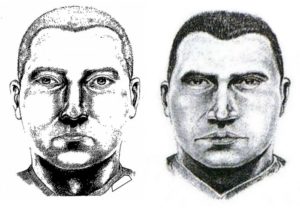
Was “Jacquez” the same person who robbed the bank in Missouri who had left a clipping about McVeigh in the back seat of the robbers’ drop car?
Nearly a year after the November 1, 1995 teletype, the Oklahoma City Bombing task force investigators would continue to examine possible links between Jacquez and the bank robbery gang that Guthrie had belonged to. Examining FBI interviews with one member of the bank robbery gang, Kevin McCarthy, shows that apparent interest. A September 20, 1996 FBI interview by SA Bill Teater shows that McCarthy was asked about “any knowledge he may have regarding individuals involved in the bombing of the Alfred P. Murrah Federal Building in Oklahoma City.” SA Teater was the same FBI agent who had interviewed the witnesses at Maloney Real Estate, and was thus the point man in the Jacquez investigation.
During the interview, McCarthy was asked about people he associated with or had seen at Elohim City, a racial separatist compound. Guthrie had visited Elohim City throughout the early to mid 90s and was well known to McCarthy, having participated in numerous bank robberies with him.
During McCarthy’s interview, SA Teater asked McCarthy if anyone he knew had ever traveled to Missouri for the purpose of locating rural property, or if he knew anyone that might have been ex-military. He was shown the sketch of Robert Jacquez and asked if it looked like anyone he knew. Teater asked McCarthy if he knew anyone named “Robert or Bob Jacquez.” The FBI 302 report of the interview says that McCarthy “thought for a few moments and replied that he really could not think of anyone he personally knew by that name” but added that “the name was one he had heard before.”
The most illuminating part of the interview comes from Teater’s line of questioning regarding Jacquez’ appearance. Recall that witness Maloney described Jacquez as dark-skinned and “possibly American Indian” while another witness, Barbara Whittenberg, had said that the man she saw with McVeigh and Nichols on April 15th (speculated to be the same person as Jacquez) was dark skinned and “possibly Hawaiian.” By all accounts the muscular Jacquez figure was not Caucasian. Teater asked McCarthy if he knew anyone matching this description, or if anyone like that had been at Elohim City. McCarthy answered that he did not associate with people matching that description and that “anyone matching that description would not have been welcome at Elohim City.”
Indeed, the bank robbery suspect whose sketch resembled the Jacquez sketch—Richard Guthrie—was a Caucasian. Though he sometimes had a tan, it stretches the bounds of credibility to think that he would be mistaken for an American Indian or a Pacific Islander. Likewise, a person fitting that description would be an unlikely figure to be found among the white supremacists to be found at Elohim City and within McCarthy and Guthrie’s social circle.
Ultimately, Guthrie just doesn’t fit the description of Jacquez in spite of similarities between his sketch and the sketch of Jacquez. For example, Richard Guthrie did not look like a body builder, did not have a “thick neck” or a powerful build. He was 5 foot 7, where Jacquez was described as near 6 feet tall.
After an examination of the facts, it appears that Guthrie can be ruled out as having been Jacquez. Like the Rosencrans lead, the possible identification of Guthrie as Jacquez would become a dead end.
Other Witnesses to the “Jaquez” Suspect
The FBI’s OKBOMB investigation uncovered multiple witnesses whose statements to the FBI indicate that the man Maloney and Davidson saw with McVeigh and Nichols calling himself Robert Jacquez may have been seen by other people in the days and weeks prior to the bombing.
For example, a man matching Maloney and Davidson’s description(s)—in both physical appearance and behavior—was seen the day before bombing by Oklahoma City postal workers Michael Klish, Debbie Nakanashi, and Karen Reece. Nakanashi told the FBI that the day before the bombing, McVeigh and another man had been at the post office branch across the street from the Murrah building. Nakanashi’s account is important to reference here because Nakanashi’s memory of the man’s behavior and appearance so closely matches that of the man calling himself Robert Jacquez that Maloney and Davidson had encountered just five months prior. Nakanashi told the FBI that the man with McVeigh “walked with a military bearing.” Using words almost identical to those used by Maloney to describe the man, Nakanashi said that “it was obvious to me this other man was the one that was in control of the situation, he was the boss.”
Another witness who may have encountered the enigmatic “Robert Jacquez” was restaurant owner Barbara Whittenberg. Whittenberg was the proprietor of the Sante Fe Trail diner located just off route 77 in Kansas. On Saturday, April 15th, 1995 she served breakfast to Timothy McVeigh, Terry Nichols, and a third man who has never been identified. Noting a Ryder moving truck in the parking lot, Whittenberg asked the group if one of them was moving, and where to. The third man replied, telling her “Oklahoma City.” Whittenberg replied that she had relatives in a town south of Oklahoma City, making friendly small talk with the group. According to Whittenberg, the remark immediately stopped the conversation dead in its tracks—“McVeigh looked at him and you could feel buckets of ice being poured over our conversation. I got out of it.”
When Whittenberg was shown the “John Doe #2” sketch, she said that the third man she served breakfast to that morning looked different, saying “his face was thinner, his cheekbones more prominent, and his nose wider” than what the sketch depicted. However, when she was shown the sketch of “Robert Jacquez” she made a more positive identification, telling a CNN reporter “Yes. This is the closest picture I’ve seen yet!” Using language almost identical to Bill Maloney, Whittenberg recalled that the man she had seen was “darker skinned” and had a “thick neck,” looking “like a bodybuilder.” She said that the man was “possibly Hawaiian,” accounting for SA Bill Teater using that descriptor when asking bank robber Kevin McCarthy about Jacquez.
It is important to note that Whittenberg’s account of what she had seen appeared in reports from The New York Times in the fall of 1995, the Washington Post in April of 1996, a May 1996 issue of The New American magazine, the June 4th edition of McCurtain Gazette, followed by a citation and quote in the June 23rd 1996 edition of the Kansas City Star. The Associated Press would issue a syndicated report throughout all national newspapers on March 9, 1997, and the same month Whittenberg’s account would feature prominently in a TIME magazine article. Whittenberg’s media exposure, and the thus the exposure of the reality of the third suspect she had seen, was at an apex in 1997. That’s when the death threats started. Yes, death threats.
Whittenberg would later testify in 1997 before the grand jury impaneled to investigate the bombing that she began receiving death threats telling her to keep her mouth shut. At that time she told a Daily Oklahoman newspaper reporter covering the grand jury proceedings that “I’ve started to regret I ever said a thing,” adding, “I don’t do telephone interviews any more. I used to not be that way. I’m sorry.”
Who was this man, described by witnesses as the evident boss of McVeigh? His identity was sensitive enough for FBI teletypes to issue a disclaimer noting that the sketch was sensitive and on a “NEED TO KNOW” basis, to be withheld from newsmedia and other law enforcement agencies and media exposure about the man caused at least one witness to receive death threats. Terry Nichols, too, would express apparent fear concerning the identification of these other suspects.
Nichols Fears for His Life, Stonewalls
Additional confirmation that this Jacquez figure was a sensitive suspect emerges after an analysis of a batch of FBI documents stemming from 2005 interviews with convicted bomber Terry Nichols. In 2005, Nichols was interviewed by the FBI numerous times in relation to explosives and other evidence that he revealed were preserved and buried under his former Herington, Kansas home. Some of the revelations gleaned from those 2005 interviews as they relate to Robert Jacquez and John Doe #2 are relevant to the “Robert Jacquez” story but they offer more questions than they do answers.
During the 2005 interviews, Nichols told the FBI where they could locate explosives he said were buried under his former Herington home. During the interviews concerning these explosives, Nichols would tell the FBI that John Doe #2 exists and that he knows his identity, but would not reveal it out of fear for his family’s safety. Nichols said that the man’s name had not been revealed or mentioned by anyone at that time, and implied that the man or those whom he represents presented an immediate threat to his life and that of his family members.
Nichols was equally evasive about the enigmatic Robert Jacquez. Nichols said in his interviews that he had visited Missouri looking to buy real estate, but that only he and McVeigh had been there. Nichols’ description of the visit entirely omits Robert Jacquez from the narrative as if he wasn’t there. Assuming the 302 report is accurate, what prompted Nichols to exclude Jacquez from the narrative? The man clearly exists based on the solid accounts from Bill Maloney, Joe Davidson, and Nora Young. So, too, did the existence of a slip of paper recovered from Nichols’ home with the name “Jacquez” scrawled on it raise serious questions about the likelihood that the man was involved in a criminal conspiracy with McVeigh and Nichols.
Ultimately, what can be concluded based on the witness testimony, polygraph results, and FBI documents is that Robert Jacquez was involved with McVeigh and Nichols—perhaps on more than one occasion—and that for some reason, Terry Nichols is covering for this person in denying his presence. Like John Doe #2, Nichols may be fearful of the man or who he represents, and this may account for his silence on the matter. And so it remains a key mystery in the case whose answers may lie locked away with Terry Nichols.
Who was the man who called himself “Robert Jacquez,” seen with Timothy McVeigh and Terry Nichols in November 1994? What became of the fingerprint evidence that Maloney turned over to the FBI and why wasn’t it compared to the fingerprints collected in the case? Was the man spotted by Maloney and Davidson the same man seen with McVeigh the day prior to the bombing by Debbie Nakanashi? Was it the same man spotted with McVeigh and Nichols by Barbara Whittenberg on April 15th? Why was Nichols so evidently fearful concerning these suspects? Why did the FBI enact such secrecy surrounding the Jacques sketch, and fear subsequent media coverage of the suspect? Just who the hell was Robert Jacquez?
Sources/Additional Reading
News Reports:
Many of the details concerning “Robert Jacquez” were sourced from a handful of media accounts concerning the suspect that emerged in 1997–98, and again in 2001 when accounts concerning withheld documents emerged. Here is a suggested reading list for students of the case curious about this suspect:
- “Report: FBI Looking for Man Seen With Bombing Suspects.” Associated Press, 9 Mar. 1997. [link]
- “FBI Searches For Third Man.” CNN, 9 Mar. 1997. [link]
- “FBI Reportedly Looking For Man In Bombing.” Associated Press, 10 Mar. 1997. [link]
- “3rd Man Sought in Bomb Probe.” Associated Press, 10 Mar. 1997. [link]
- “Man Linked to McVeigh Nichols During Land Inquiry Is Sought.” Buffalo News, 10 Mar. 1997. [link]
- “Mystery Man Linked to McVeigh Broker Believes Trio Sought Hideout.” Cincinatti Post, 10 Mar. 1997. [link]
- “Report: FBI Searching for McVeigh Cohort.” Daily News [Los Angeles], 10 Mar. 1997. [link]
- “FBI Reportedly Seeks Man Seen with McVeigh, Nichols.” Dallas Morning News, 10 Mar. 1997. [link]
- “FBI Looking for Man Who Sought Hideout With Suspects in Blast.” Houston Chronicle, 10 Mar. 1997. [link]
- “FBI Seeks Man With McVeigh.” Spokane Spokesman-Review, 10 Mar. 1997. [link]
- “Man Linked to McVeigh, Nichols During Land Inquiry Is Sought.” The Buffalo News, 10 Mar. 1997. [link]
- “FBI Seeks Suspects’ Companion.” The Salina Journal, 10 Mar. 1997. [link]
- “Who Is Robert Jacquez?” TIME, 17 Mar. 1997. [link]
- “OKC Case Still Missing a Link.” Rocky Mountain News, 21 Apr. 1998. [link]
- “John Doe 2 It’s Still an Open Question.” Kansas City Star, 4 Jun. 1998. [link]
- “Conspiracy Theory Lingers in Oklahoma City Attack.” Kansas City Star, 6 Jun. 1998. [link]
- “More McVeigh Files Found: FBI Orders Massive Search.” Los Angeles Times, 15 May 2001. [link]
- “Were There Others?” ABC News, 30 May 2001. [link]
Books:
Gumbel, Andrew, and Roger Charles. Oklahoma City: What the Investigation Missed — and Why It Still Matters. HarperCollins, 2012, pp. 212–216, 255, 309
FBI Documents:
- FBI 302 #174A-OC-56120 D-3576 5/10/95 interview William Maloney
- FBI 302 #174A-OC-56120 D-12742 12/06/95 interview and hypnosis of Nora Young
- FBI teletype 01 Nov. 1995 from FBI St. Louis to Director and field offices (re: bank robber sketch looks like Jacquez sketch, similarities between boots Jacquez wore and bank robber suspect wore. See also “sensitive” disclaimer regarding distribution of sketch on “need to know” basis)
- FBI 302 #174A-OC-56120 D-16027 9/18/96 interview Kevin McCarthy (re: Jacquez, McCarthy asked about Jacquez, says he wouldn’t be welcome at Elohim City due to American Indian or Pacific Islander description)
- FBI 302 #266A-DN-64168–200 5/12/2005 interview Terry Nichols (re Jacquez, see 2nd to last paragraph where Nichols lies)
- FBI 18 page memo from Denver to Counterterrorism Division 6/24/2005 (excerpt includes page 11 where Nichols says he knows who JD2 is but will not identify him out of fear for his life and his family’s life)
Richard Booth is an independent citizen journalist and member in good standing with the Constitution First Amendment Press Association (CFAPA). A student of the OKC bombing case since 1995, Richard began researching the Oklahoma City bombing in earnest in 2012 and is currently writing a book about the case. Richard has appeared on podcasts to discuss his interest, highlighting areas that warrant additional research and expressing the need for more students to actively research this case. In April 2020, Richard donated his archive of research materials—thousands of news reports, articles, magazine pieces, FBI documents, ATF documents, court records and trial transcripts to The Libertarian Institute. You can find this archive here.
This article was originally featured at Medium and is republished with permission.

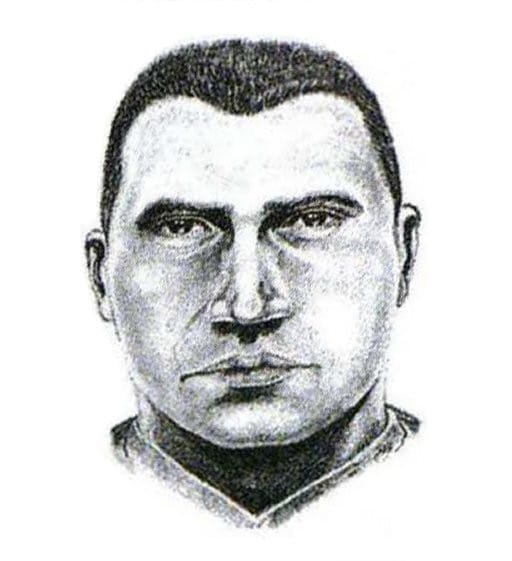
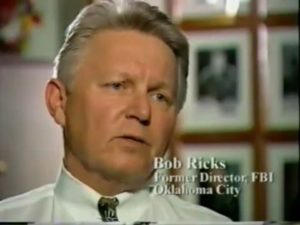 “The theory there was that Timothy McVeigh was searching for a place to perhaps have a hide-out and Robert Jacquez was utilized to perhaps obtain property in Missouri. It’s very remote terrain, it’s terrain familiar — there are a lot of right wing groups around there, from Elohim City Oklahoma to other groups in Arkansas to the Ozarks in Missouri which would be the perfect type spot.”
“The theory there was that Timothy McVeigh was searching for a place to perhaps have a hide-out and Robert Jacquez was utilized to perhaps obtain property in Missouri. It’s very remote terrain, it’s terrain familiar — there are a lot of right wing groups around there, from Elohim City Oklahoma to other groups in Arkansas to the Ozarks in Missouri which would be the perfect type spot.”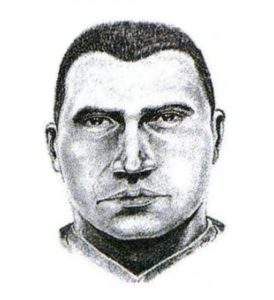 The Manhunt for “John Doe #3”
The Manhunt for “John Doe #3”